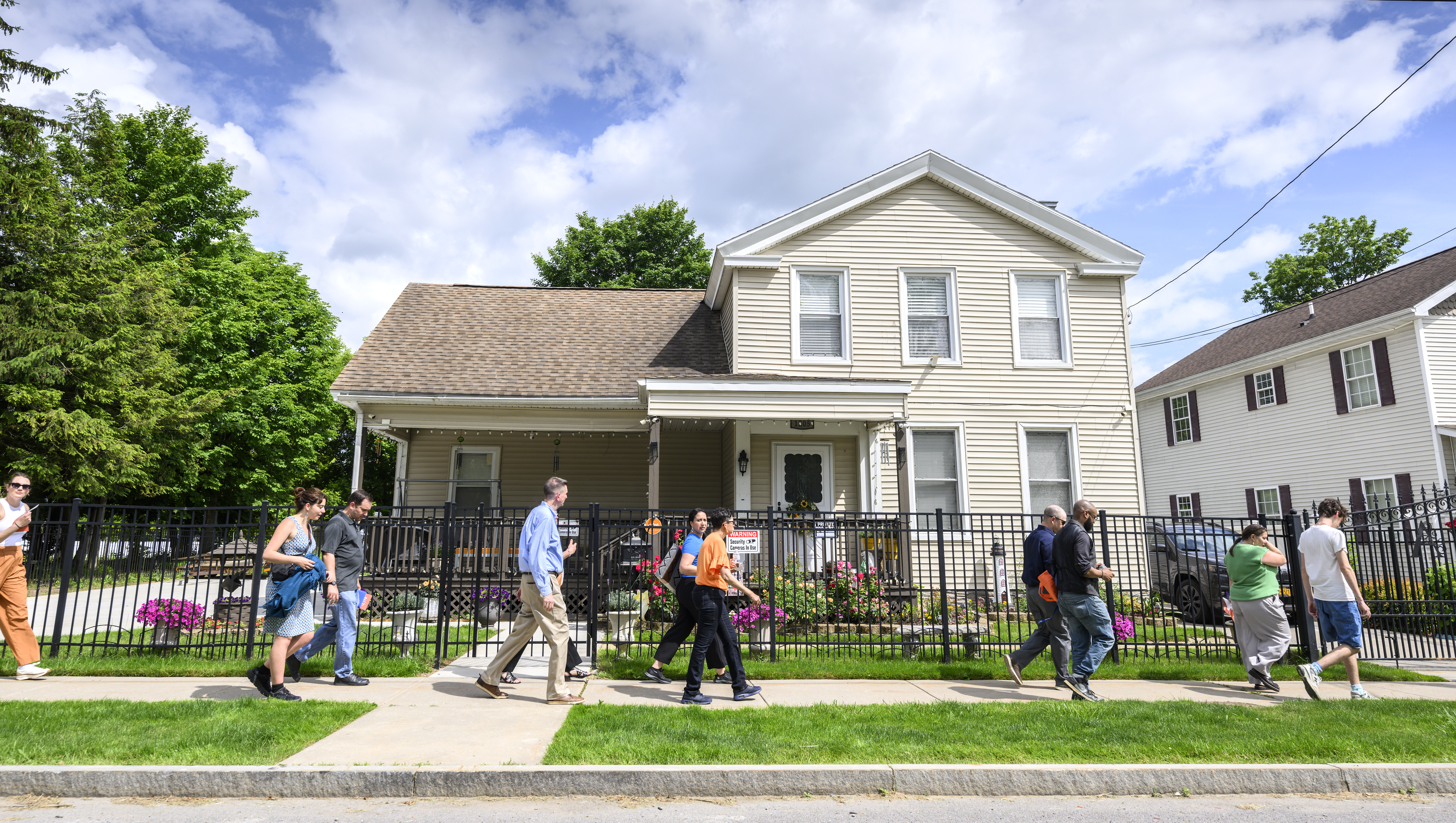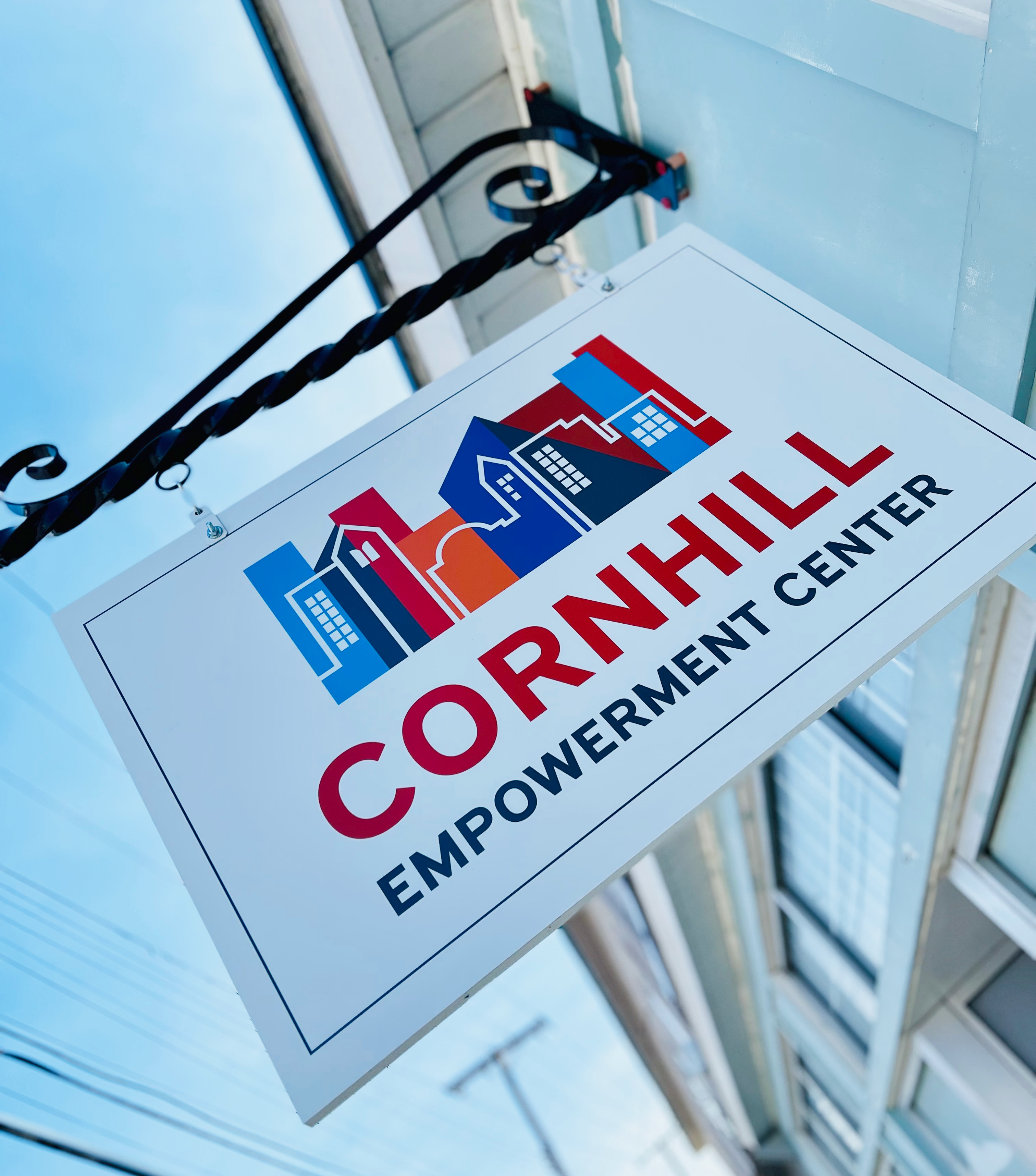
How the Cornhill Revitalization Project is building a future of opportunity in Utica
For nearly a decade, the Community Foundation of Herkimer & Oneida Counties has worked alongside residents, nonprofits and local leaders to revitalize one of Utica’s most historic neighborhoods. The Cornhill Revitalization Project, now well underway, represents more than just new buildings. It’s a long-term commitment to creating safe, vibrant spaces where families, young professionals and residents can thrive.
“Cornhill is a neighborhood that has often described itself as being left behind,” explains Tyler Hutchinson, director of strategic initiatives at the Community Foundation.
Years of listening to residents’ concerns laid the groundwork for action. What began as a single-site vision has grown into a multi-site plan designed to meet critical needs—housing, community space and economic opportunity.
Two impact centers, one neighborhood vision
In partnership with People First, Mid-Utica Neighborhood Preservation Corporation, Collective Impact Network, City of Utica and Oneida County, the Community Foundation is focused on developing two “Impact Centers” in the Cornhill neighborhood. One location on West Street, the other on James Street.
The West Street site will feature 78 units of mixed-use housing, a full-size gymnasium and flexible multi-purpose rooms designed for community programming. The vision for this center is to serve as a family-focused hub, offering spaces where children, parents and seniors alike can gather for recreation, educational programs and community events brought forth by working directly with other nonprofits. The site is designed to strengthen neighborhood connections while addressing the area’s long-standing shortage of both affordable living space and shared gathering places.
The James Street site is designed to retain and attract young professionals in the community. Plans include a business incubation space, multimedia lab, a grocery market to bring fresh food directly into the neighborhood, along with 24 housing units on the upper levels.
“We’re losing a lot of our young professionals…we train them, teach them and then lose them to bigger cities,” said Jessica Amber Hernandez, the Community Foundation’s strategic initiative program manager. “But the idea is if we have more opportunities for young professionals, then we can retain their talent and help them thrive.”
Together, the two Impact Centers will provide more than 100 new housing units and nearly 40,000 square feet of community space.
Nurturing culture, safety and connection
The project also embraces broader initiatives focused on art, history and urban recreation. The goal is to establish committees of residents, educators and local artists to guide projects and programming that highlight and celebrate Cornhill’s rich cultural identity.
“We want to inspire the local residents to bring back the vibrancy and history to the neighborhood and reenergize the identity from within Cornhill,” Hutchinson says.
Safe, walkable connections between the Impact Centers and throughout the entire neighborhood are also a key priority. The vision includes well-lit crosswalks and pedestrian-friendly pathways linking West Street and James Street, making it easy and secure for residents to travel between sites and throughout the neighborhood.
Driven by community voices
From the start, resident input has guided the project’s direction through interviews, pop-up events, surveys, focus groups and community dinners where neighbors could share their ideas and make their voices heard. “At every step, we involve the community and local nonprofit organizations to ensure they have a voice in how the project is unfolding,” says Hernandez.
The Cornhill Empowerment Center located at 230 James Street is one of the first physical investments of the Cornhill Revitalization Project. Serving as a longtime gathering place for community events, the building has entered a new chapter as a shared neighborhood asset and pilot site for future Impact Centers. Pilot programs are already underway at the Cornhill Empowerment Center.
Avoiding displacement
With any neighborhood investment, gentrification concerns are real. “We’ve been very intentional about ensuring this project is shaped in partnership with the community,” explains Hernandez. The Community Foundation and project partners have taken intentional steps to ensure Cornhill residents aren’t priced out of their community.
The inclusion of mixed housing — below-market and market-rate options — ensures families at different income levels can remain rooted in Cornhill while benefiting from revitalization.
A model for the future
The Cornhill Revitalization Project stands as a powerful example of what happens when neighbors, nonprofits and civic leaders work together toward a shared vision: not just revitalizing a neighborhood but building a community where everyone belongs. The project’s funding application should conclude by the end of 2025 with the hopes of being fully funded.
For more information and to follow along for updates on the Cornhill Revitalization Project, visit www.revitalizecornhill.com.
Article originally published in the Daily Sentinel on September 12, 2025.

